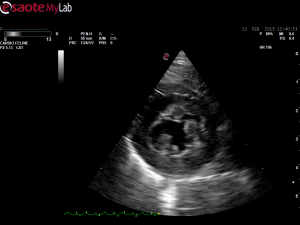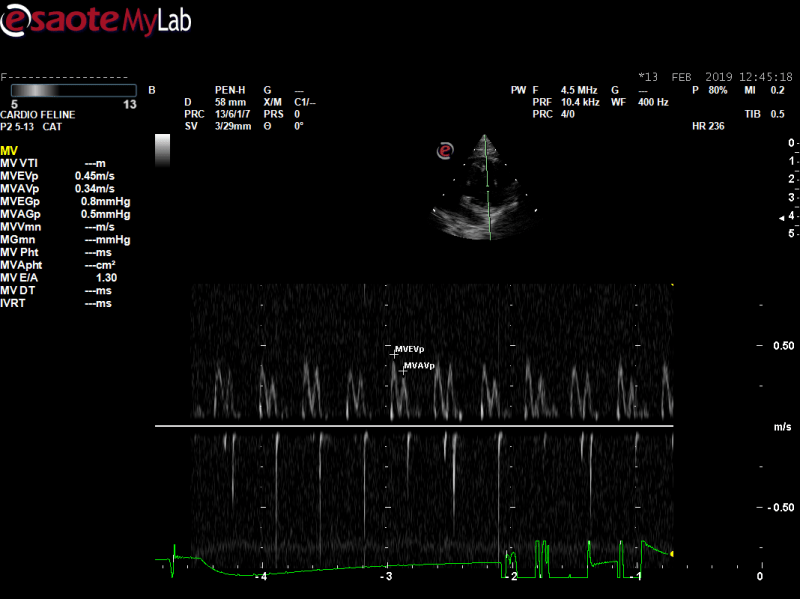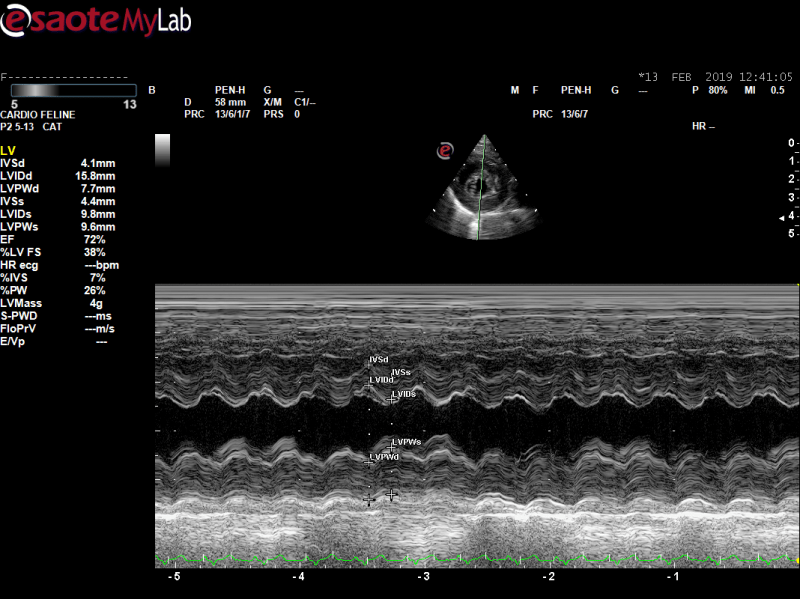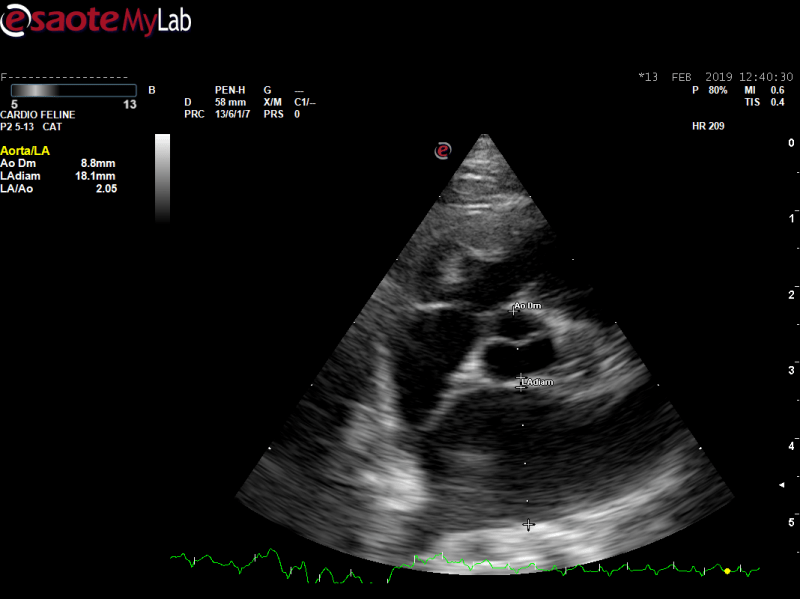- 10 year old MN DSH presented in CHF with pulmonary oedema
- Stabilised and echo done after a few days of furosemide
- I can see a mildly thickened LV wall with hyperechoic endocardium, contraction seemed poor but ok on measurements, bi-atrial enlargement
- Would you classify this as a RCM?
- 10 year old MN DSH presented in CHF with pulmonary oedema
- Stabilised and echo done after a few days of furosemide
- I can see a mildly thickened LV wall with hyperechoic endocardium, contraction seemed poor but ok on measurements, bi-atrial enlargement
- Would you classify this as a RCM?




Comments
HI
As you said, there is
HI
As you said, there is regional LV concentric hypertrophy with increased echogenicity, particularly of the endocardium. The papillary muscles are enlarged and an accessory papillary muscle is visible. Parts of the LV free wall are hypokinetic (maybe due to ischemia). The left atrium is significantly enlarged, the right heart is enlarged as well.
Looking at the LV I’m a bit more on the HCM side. Still, cardiomyopathies in cats are very very heterogenous – Of course it’s simple if you are dealing with a standard HCM or DCM or ARVC, but sometimes it’s difficult to press morphology and function into categories. – and it doesn’t really matter how you name it, you treat the pathophysiological features you see.
So, given the fact that the right ventricle does not really match with HCM, you can either find a reason for this (TI,pulmonary hypertension…) or you term it “Unclassified Cardiomyopathy”, “Cardiomyopathy” or HCM with additional right heart enlargement.
I don’t think that cats read our textbooks and I’m convinced that pathology does not follow our “arteficial” categories 🙂
Thanks for posting!
Peter
Thank you Peter.
Thank you Peter.